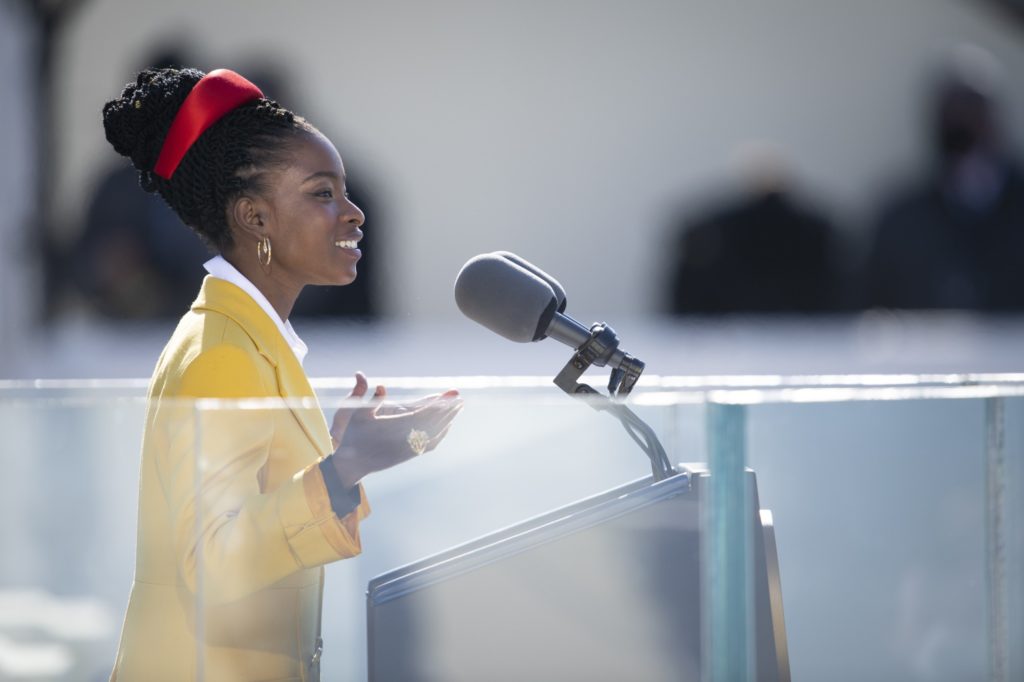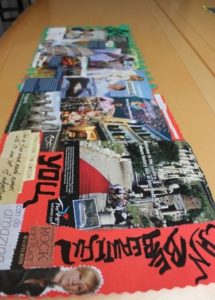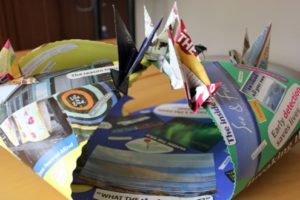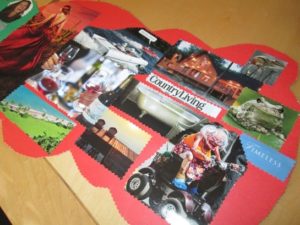Harnessing the Power of Language for Healing
By Sarah R. Blanton, PT, DPT, FNAP, Editor-in-Chief
“For there is always light,
if only we’re brave enough to see it.
If only we’re brave enough to be it.”
— Amanda Gorman, “The Hill We Climb”
National Youth Poet Laureate, Inauguration of Joe Biden, January 20, 2021
As we eagerly embrace signs of spring, I want to step back for a moment and reflect on a frigid day in January—a day when the country paused for a moment to hear the words of a young female poet on the steps of the United States Capitol. During one of the bleakest winters in a generation, a simple, elegant poem gently cracked the frozen tundra of our weary despair. I felt a shift in my spirit, not realizing just how deeply I had let my hope go dormant. And yet, it was the amazing collective response—across the country—to the poem by Amanda Gorman that moved me to let go of that protective armor and believe again. Was it the juxtaposition of this diminutive black woman in bright yellow so beautifully and gracefully wielding the power of poetry against a backdrop of violent white insurrectionists who had marched on those very steps just days prior?
“Words matter.” It’s a phrase spoken so much of late that it borders on the cliché. Yet, in my lifetime I have not experienced a more vivid demonstration of the power of language than during this last month of January. A vulnerable time when inflammatory rhetoric whipped an angry mob into a frenzied attack on our nation’s symbol of democracy, and yet, on the very same steps, a lone young woman wielded words that offered redemption and inflamed our hearts again with hope, a belief in a better world—a better world together.
Image credit: DOD Photo by Navy Petty Officer 1st Class Carlos M. Vazquez II
“Let the globe, if nothing else, say this is true:
That even as we grieved, we grew.
That even as we hurt, we hoped.
That even as we tired, we tried.
That we’ll forever be tied together, victorious.
Not because we will never again know defeat, but because we will never again sow division.”
What emotions do those words stir within you? Now, reflect on the power of your own words—as a researcher, educator, clinician. While we often feel our rehabilitation currency is manually based, we neglect to see the transformative power of our language. As a researcher, your study grant is a vehicle to persuade funders that your ideas are a worthwhile innovation, your manuscript a rich narrative of your findings. Your success essentially is linked to the skill of your writing to effectively tell your story. As an educator, it is not too bold to say that the future of our profession lies in your ability to use your rhetoric to inspire the moral imagination of your students, and not just to impart technical skill-sets. How well you teach students to first become aware of, and then harness the power of, language is guided by how artfully you yourself model these characteristics. And finally, as clinicians, it is our words that create bridges of trust, avenues of healing, that translate our caring into action and strengthen our therapeutic relationship. That relationship is the very foundation upon which we apply our manual skills and intellectual decision-making. Undoubtedly, these habits of the heart are what connect the habits of the head and hand.
Personally, when I encounter a patient years after our therapy sessions have ended, and she says, “I remember when you said I was making such good progress even with those small gains in my walking, it made me feel full of hope again, that I could get back being myself,” I am humbled at the legacy of my word choices, and persuaded once again to be mindful of the impact of language.
So, now, I ponder: how do we harness that power of language for healing? First, I think we must adopt a perspective of humility and mindfulness of the role of words in all aspects of our work. Then, we need to proactively engage with the humanities, whether reading poetry or prose, to sharpen our language skills. “Can reading Tolstoy make us better therapists?” Yes, I whole-heartedly think so. But not just to strengthen clinical or grant-writing skills. To truly listen to a patient’s story, we need to hear our own story. We need to find that poetic beauty in our own lives. Become a better person, and you will become a better clinician, educator, researcher. Dive into that vast sea of language that surrounds us. Feel the joy and recognize the hope, fuel the inspiration, and guide the moral imagination. All this lies waiting in the words.
We are continuing with our designated themed series dedicated to topics of social justice as well as the experiences of people caught in the COVID-19 pandemic. We encourage our readers to consider sharing their reflections and perspectives as we forge deeper connections together to envision our collective future.
Our Spring 2021 issue of JHR offers us opportunities to sit in that space of humanities for critical reflection and exploration. The articles and essays include:
by Nicole Hughes, MScPT, Sierra Norville, MScPT, Rebecca Chan, MScPT, Raghavan Arunthavarajah, BSc, Dan Armena, MScPT, Nazaneen Hosseinpour, MScPT, Meredith Smith, MScPT, and Stephanie A. Nixon, PhD
This article is part of a program of advocacy-oriented scholarship, co-led by Black physiotherapist Meredith Smith and white physiotherapist Stephanie Nixon, which uses critical race theory to reflect on and inform the field of physical therapy. The authors consider how the social structure of racism is embedded and reproduced within physical therapy (and rehabilitation and healthcare more broadly) in order to inform anti-racist responses.
Gathering on the Wrong Side of the Road: Critical Race Scholarship Across the Health Humanities
by Bryan Mukandi, PhD
In a compelling response to Exploring How Racism Structures Canadian Physical Therapy Programs, Bryan Mukandi offers an account of his critique of early drafts of the article, requested by the authors. He notes that his fear at the time was that the article “was an inadvertent reiteration of the idea that the inclusion of people of color in health disciplines is a matter of charity rather than justice.” Dr. Mukandi expresses the hope that more colleagues like these can gather with those “on the wrong side of the road” to foster dialogue and spur change.
Profiles in Professionalism With Beth Skidmore
by Melissa McCune, PT, DPT
This installment of JHR’s interviews with industry innovators focuses on clinician, researcher, and educator Beth Skidmore, an award-winning Occupational Therapist whose gifts inspire a wide range of students. Beginning with her early days, detailing why she chose her field, to describing her current leadership roles, Dr. Skidmore offers a compelling picture of how professionalism develops and professionals reach enlightenment. “I think now professionalism means to me…grace and humility,” she notes.
Making Strange: Exploring the Development of Students’ Capacity in Epistemic Reflexivity
by Euson Yeung, PhD, Barbara E. Gibson, PhD, Ayelet Kuper, DPhil, Jay Shaw, PhD, and Stephanie A. Nixon, PhD
Engaging in epistemic reflexivity, or the ability to question the ways in which we practice, and their association with organizational and social structures, is the key to gaining a clear perspective on the profession, according to these authors. How can students take a step back, and gain true insight into their professional world? This study employed a 7-step framework to introduce learners to the process of “making strange.”
by Amy Haddad, PhD, RN
Interpreting poems written by renowned poet Ted Kooser in a Nebraskan winter in 1998, his friend Amy Haddad highlights the beauty of the human spirit when faced with life-threatening challenges. Kooser wrote the poems on his two-mile walks before dawn as he recovered from surgery, chemotherapy, and radiation for tongue and neck cancer in 1998. Compact and powerful, they show how one creative mind forged a bit of order in the “chaos” of recovery.
POEMS AND NARRATIVES
by Jamie Fleshman, SPT
In this artfully crafted poem, Jamie Fleshman speaks authentically from a place of experience about the difference between sympathy and empathy, and how empathy can lead both the patient and the clinician to a place of deeper mutual understanding and appreciation.
by Hannah Vaca, SPT
This poem was inspired by Hannah Vaca’s work in an Anatomy dissection lab. The author was astounded by the donor’s sacrifice and how instrumental their gift is to a health science student’s education. Her poem reflects upon this gift and the emotions that often left her speechless and in tears following a day in the lab.
by Kirsten Woodend, PhD, RN, MSc
In her stark and direct poem, Kirsten Woodend details the “multitude of indignities” that someone “in the process of body repair” can suffer. She notes how a person in recovery becomes a child in others’ eyes, “incapable of coping mentally or physically.” The poem asks why these extra psychological burdens must be added to the healing process.
The Importance of Humanism in Patient Care During a Pandemic
by Olivia Wolfe, DPT
How does a student cope with isolation during a forced four-month break from clinical rotations? Olivia Wolfe enrolled in an online course, Humanism in Health and Healthcare. Its impact inspired her to use her “voice and privilege to uplift and support essential causes fighting the twin pandemics of COVID-19 and racism.” She details her journey to a new commitment to humanism at home and in the clinic.
by Corey Nolte, PT, DPT
In an intimate case study from his residency year, Corey Nolte shows how “my narrow-minded understanding of the resiliency of the will to live was expanded.” As his terminally-ill cancer patient became more frail and less willing to accept treatment, they shared a tender, intimate moment of prayer. Drawing on his experience of the death of her own mother, Nolte offered comfort through his patient’s final days. By carefully supporting end-of-life wishes, he notes, “we can help to unburden patient angst and give direction to our own moral compass.”
JHR-CHEP Student Narrative Essay Winner
Congratulations to Neumann University Doctor of Physical Therapy Program graduate student Kelsey Robinson, SPT, the winner of the 4th annual physical therapy student essay contest co-sponsored by the ACAPT Consortium for the Humanities, Ethics, and Professionalism (CHEP) and JHR! In her essay, A Journey Toward Mindfulness, Ms. Robinson reminds us that while we cannot fully understand someone else’s steps through life, we can “validate life through [our] own shoes. Whether embellished with privilege or stained by tribulations, reflecting on one’s own life experiences will uncover biases, personal revelation, and the means to navigate life as a part of shared humanity.” Essays from the two additional finalists, Henry Fok, SPT (Columbia University) and Xavier Gibson, SPT (Springfield College), will be published in the Fall 2021 issue of JHR.
PERSPECTIVES AND RESEARCH
by Roanne Thomas, PhD, Ryan Hamilton, PhD, Gen Allen, Viviane Grandpierre, PhD, Josée Boulanger, Christine Novy, and Yvonne Anisimowicz
With compelling quotes from participants, and links to their groundbreaking video, these authors relate the fundamental impact of a series of workshops they developed to help cancer survivors live with lymphedema. The lymphedema video is “an accessible tool for patients, caregivers, students, and healthcare professionals,” they note. “We echo the participants’ hope that it will encourage dialogue between health professionals and patients.”
by Gayla Elliott, MA, ATR
This poignant case study, featuring impressive art created by a military veteran with traumatic brain injury and comorbidities, expresses the power of Art Therapy to heal profound physical and psychological wounds. “The veteran’s art increased his self-awareness while informing the clinical team of his ongoing experience,” Gayla Elliott notes. His art and his words make a compelling case for adding art to the rehabilitation process.
by Susan Shifrin, PhD
“What started as a narrowly-focused mission to welcome people with dementia … into our museum for the first time evolved into a much broader and more profound project: to reinvent what agency within the museum would look and feel like for visitors living with dementia,” author Susan Shifrin notes in this compelling piece. She details her journey from that experience to founding ARTZ Philadelphia, a program that invites people with dementia to serve as mentors to program participants.
by Eric Holshouser, SPT, PE
In this issue’s Resources page, Eric Holshouser offers a rich list of ways to cope with the isolation of the COVID landscape by spurring creative thought. Readers may find respite in The Art of Happiness by the Dalai Lama, or view an online webinar on Flourishing in an Era of Uncertainty. Holshouser also includes links to crucial current information—such as the groundbreaking, and important, video The Social Dilemma.
Finally, I am honored to announce a new addition to the JHR Editorial Consultant Staff, Bryan Mukandi, MBChB, GCHed, MA, PhD, Australian Research Council DECRA Fellow at the University of Queensland’s School of Languages and Cultures. With his background as a philosopher who works in Black Studies (Africana philosophy and literature; critical philosophy of race; and critical Indigenous studies) and the Health Humanities (medical ethics; philosophy of medicine and community health), he brings valuable wisdom and perspective to the Journal.
We also welcome Tim Barlott, MSc, Grad Cert (Community-Based Participatory Research), BScOT as Critical Research and Perspectives Section Co-Editor. A faculty member at the University of Queensland, School of Health and Rehabilitation Sciences (and Assistant Professor, Department of Occupational Therapy, the University of Alberta as of July 1, 2021), Tim is an occupational therapist and sociologist, with a particular interest in critical perspectives on mental health and social participation.
———-
Thank you for joining us. We hope you find hope and inspiration in the Spring 2021 issue of JHR.
If you are interested in submitting your work to JHR, please review our Submission Guidelines. If you are considering being a reviewer, please contact Dr. Sarah Blanton: follow the Contact link, indicate the content area you are interested in reviewing, and attach your CV.
1 Gorman, Amanda. “The Hill We Climb”. Inauguration of Joe Biden, January 20, 2021. Available at: https://thehill.com/homenews/news/535052-read-transcript-of-amanda-gormans-inaugural-poem
Accessed February 25, 2021.








 Member since 2019 | JM14274
Member since 2019 | JM14274


NO COMMENT